Garden outside the lunch place
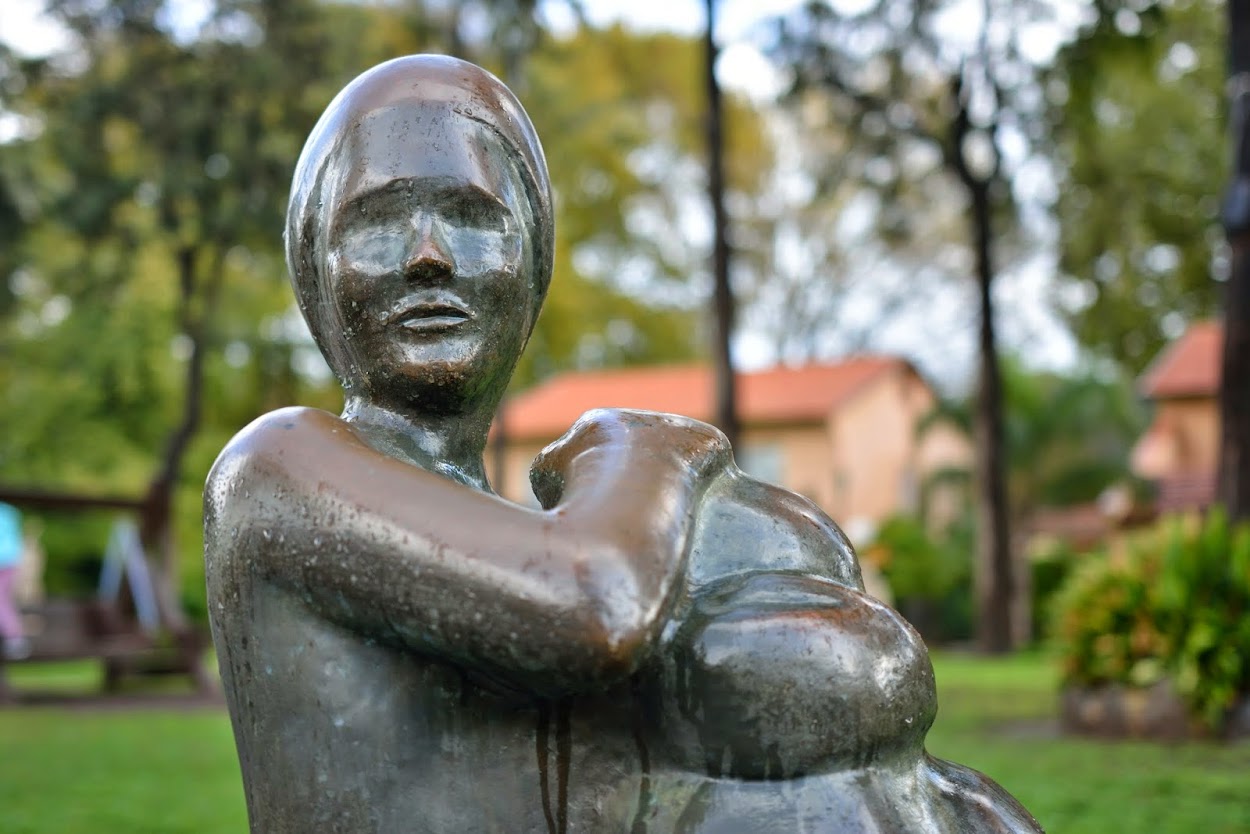
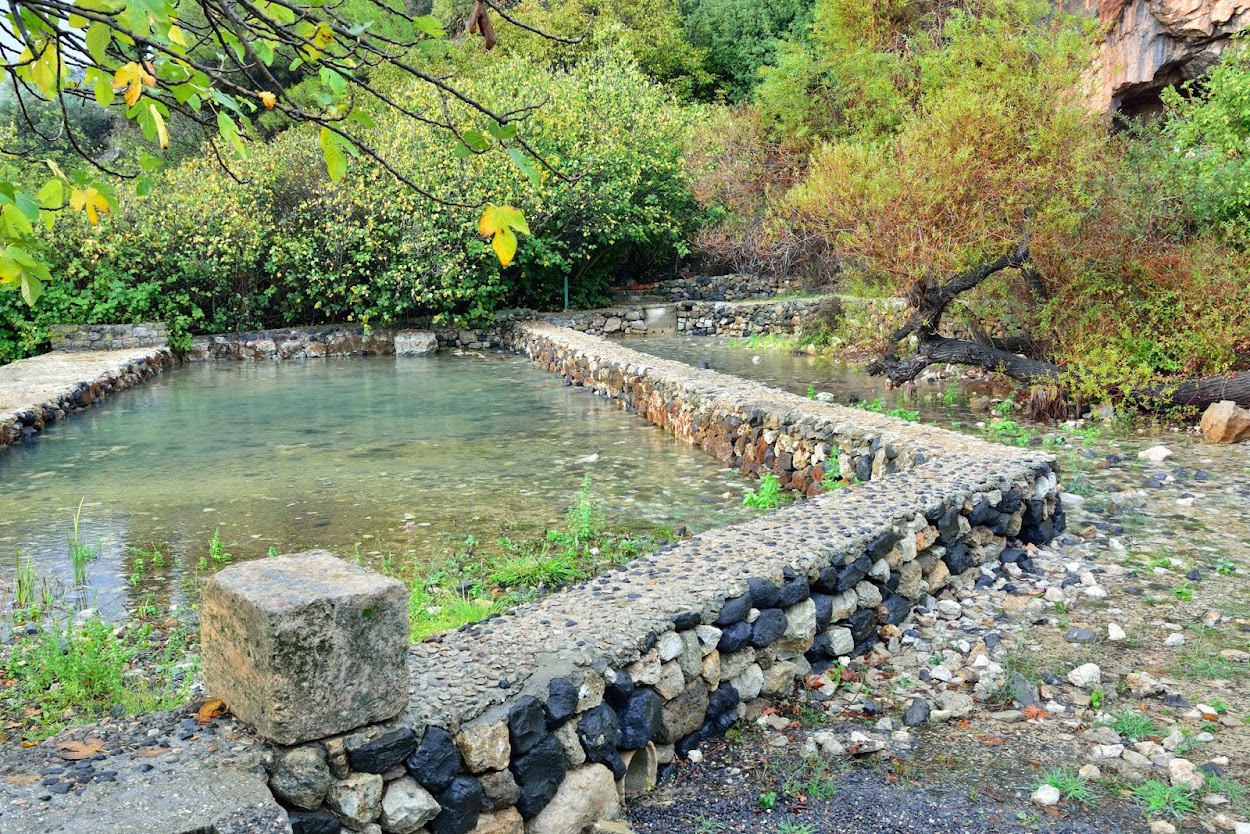

After lunch, we visited CAESAREA PHILIPPI. It was raining so very few pictures wee taken.
Rev Quek's Notes:
CAESAREA PHILIPPI (BANIAS)
Caesarea Philippi was situated near the northern extremity of the land of Israel, south-western of Mt Hermon. It had an elevation of about 1,150 feet above sea level. It was earlier known as Paneas and was a center of pagan worship from ancient times. It was a cult centre of the fertility god Pan. At the grotto (small cave) of Pan, human sacrifices are performed by throwing the sacrifice into the waters. If it disappeared, the sacrifice was accepted by Pan. The presence of the spring forming the large stream, called the Banias River, fit well with the belief that the fertility gods provided water. Its sudden emergence from the ground at the floor of the cliff, a long rock face more than 100 feet high, supported the pagan belief that the gods went to the underworld (Hades) and re-emerged each year.
A large number of families from the Israelite tribe of Dan relocated during the 12th C from the central region of Israel to the area around the Canaanite city of Laish-Leshem. The people of Dan stole from Micah and erected in their new city, perhaps in the cave of Banias (Judges 18 27, 30):"And they took the things which Micah had made... and the children of Dan set up the graven image".
The Bible tells how 600 families of the Dan tribe looked for a substitute for their location in the center of Israel, by sending 5 spies to the Canaanite city (Judges 18 1-2). They later captured the city (Judges 8 27): "and came unto Laish, unto a people that were at quiet and secure: and they smote them with the edge of the sword, and burnt the city with fire". The Israelites renamed the city to Dan (Joshua 19 47):
After the death of Alexander the Great, the city was the location of a major battle in 198 B.C. in which Antiochus the Great defeated the Egyptians and took control of the land of Israel for the Seleucids.
In 20 B.C., during the Roman times of the New Testament, it was transferred to the control of Herod the Great who built a temple there to Caesar Augustus (the Roman emperors claimed to be gods in ancient times). After Herod died in 4 B.C., it came under the authority of Herod's son Philip who renamed it Caesarea Philippi after Tiberius Caesar and himself. Herod Agrippa II, the grandson of Herod the Great renamed the city Neronias after Emperor Nero, but after Nero committed suicide the name was changed back to Paneas.
During the Jewish-Roman War of 66-70 A.D., in which Jerusalem was devastated, the Roman general Vespasian camped his army there for a time. After the war, Titus held gladiatorial shows in the city where many Jewish prisoners were slaughtered for the perverted amusement of the spectators.
With Caesarea Philippi being so close to Galilee, Nazareth and Capernaum, Jesus often visited the city during His lifetime. It was this place He asked His disciples on “whom do men say that I the Son of Man am?” (Matthew 16:13-23, Mark 8:27-33). The Transfiguration is believed to have taken place on a mountain not far from Caesarea Philippi (Matt 17:1ff).
End
Caesarea Philippi (Banias). Located to the north of the Sea of Galilee, on the southwestern slope of Mount Hermon, Caesarea Philippi is the source of one of the largest springs feeding the Jordan River. Numerous temples were built here during the Hellenistic and Roman periods and this site was named Panias (Banias in Arabic) after the Greek god Pan.
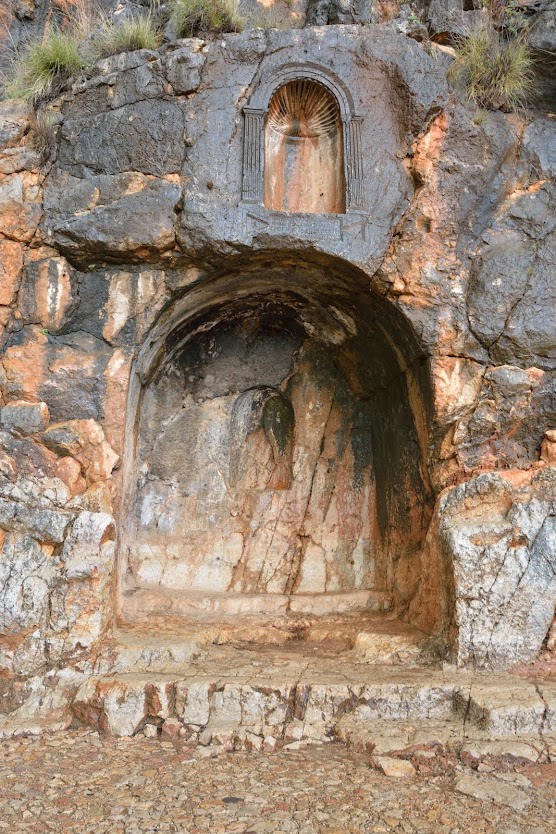
Child sacrifice practised by the pagans during Jesus' time believed to have happened here

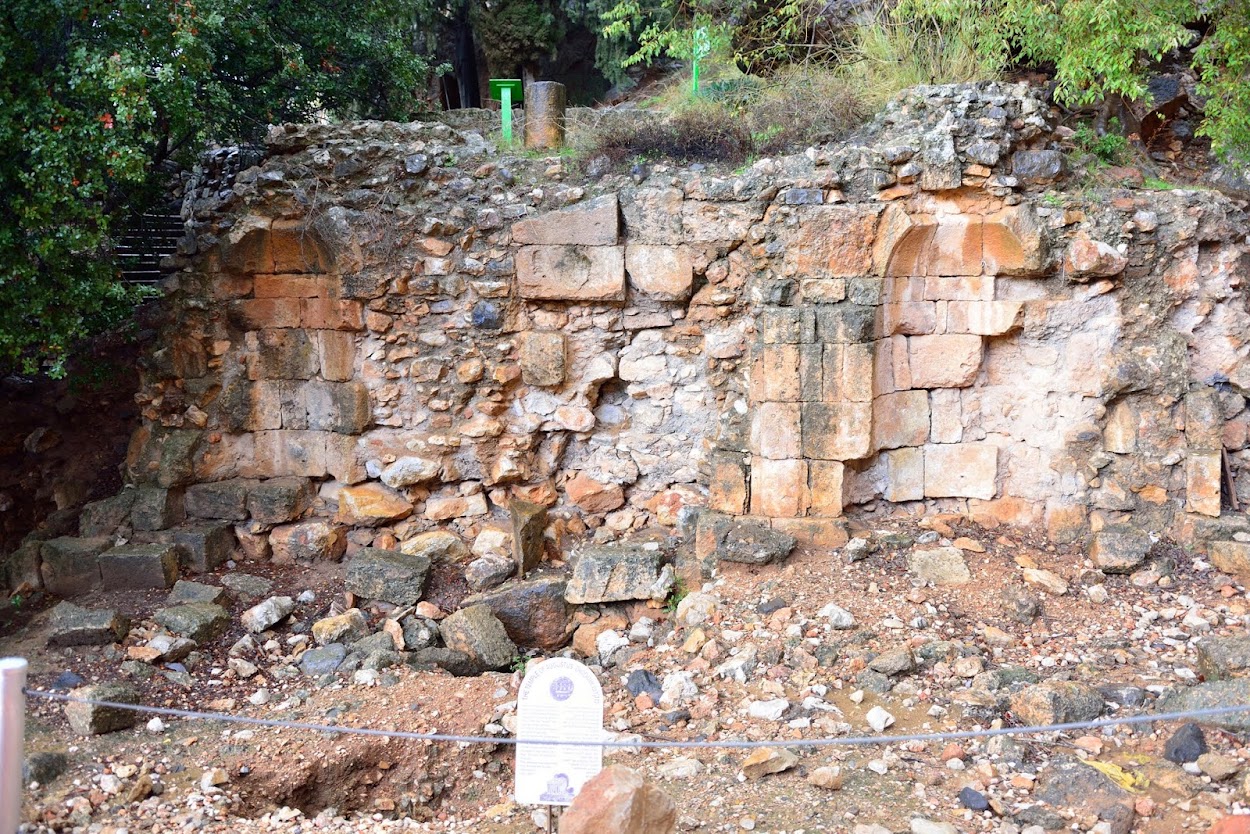

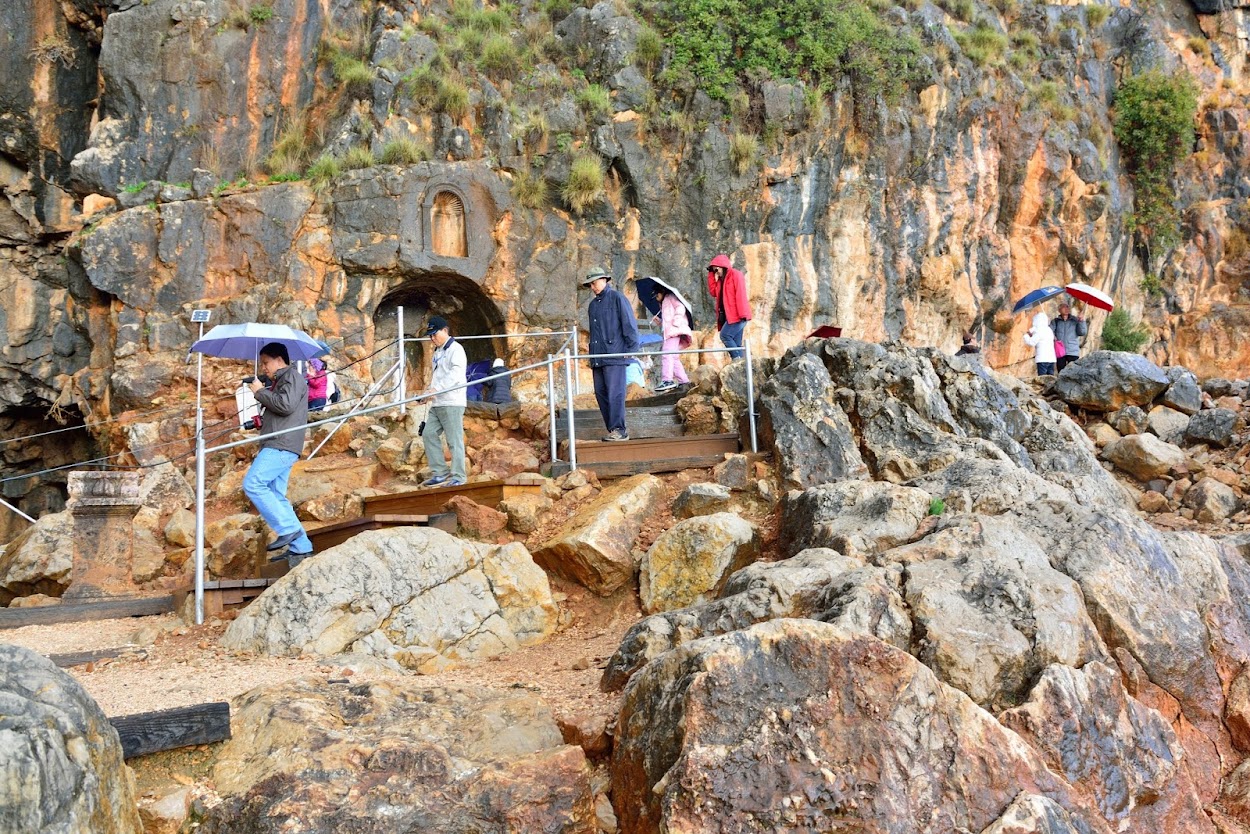
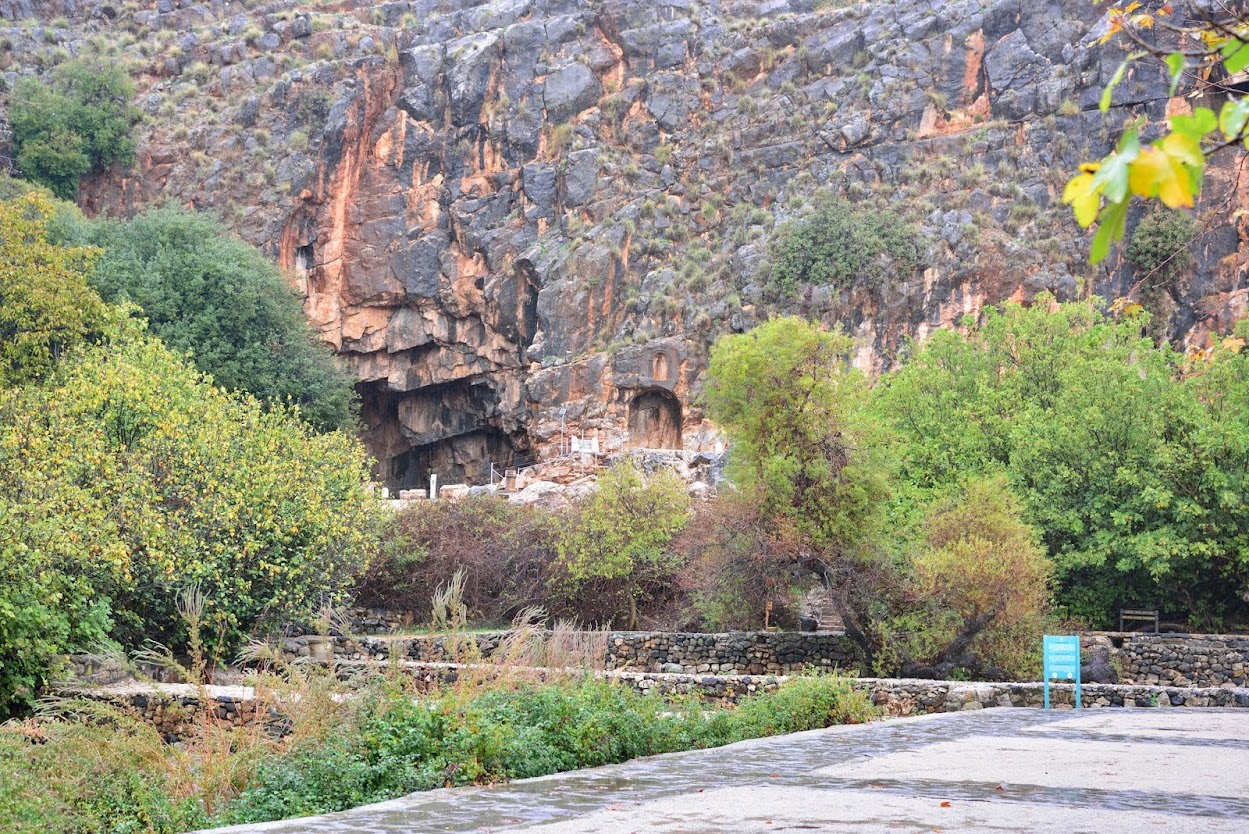
The rain became heavier and so we only could view the Golan heights thru the windows of the bus. In biblical times, Golan Heights (Bashan) was known for its cattle and its oak trees. (Amos 4:1–2; Zechariah 11:2; Isaiah 2:13) In the present day, the Golan Heights is a strategically significant area closely guarded by Israel and its neighbours Syria, Jordan and Lebanon. From the top of the military bunker (Mount Bental), you can see the borders of all these nations.
There are four Druze villages on the Golan Heights. In the late 1970s, the Israeli government offered citizenship to all non-Israelis living in the Golan, which would entitle them to an Israeli driver's license and enable them to travel freely in Israel. Rev Quek's notes
It is a rocky plateau with an average height of 1000m. This plateau straddles the borders of Israel and Syria. The Golan contribute 15% of Israel’s water supply. Golan means captive. It was formerly called Bashan. Og, the king of Bashan was defeated by Moses. The land was given to the half tribe of Manasseh. (Nub 21:33-35;32:33). It was designated as one of the cities of Refuge (Deut 4:41-43). It is where God gave Ahab victory over Ben-Hadad and the Syrian army at Aphek in Golan (1 Kings 20:26-30). Later the prophet Elisha, while on his deathbed, prophesied Israel's victory at Aphek over the Syrian army (2 Kings 13:17).
In Biblical times, the Golan Heights was referred to as "Bashan." The Bashan Region was promised to the Patriarch Abraham and the people of Israel on the occasion of the "Brit Ha (Covenant of) Betarim" (Genesis 15). The word "Golan" derives from the biblical city of "Golan in Bashan," (Deuteronomy 4:43, Joshua 21:27). The area was assigned to the tribe of Menashe (Joshua 13:29-31).
In early First Temple times (953-586 BCE), the area was contested between the northern Jewish kingdom of Israel and the Aramean kingdom based on Damascus. King Ahab of Israel (reigned c. 874-852 BCE) defeated Ben-Hadad I of Damascus near the site of Kibbutz Afik in the southern Golan (I Kings 20:2630), and the prophet Elisha prophesied that King Jehoash of Israel (reigned c. 801-785 BCE) would defeat Ben-Hadad III of Damascus, also near Kibbutz Afik (11 Kings 13:17).
In the Second Temple period, late 6th and 5th centuries BC, the region was settled by returning Jewish exiles from Babylonia. In the mid 2nd century BC, Judah Maccabee and his brothers came to the aid of the local Jewish communities when the latter came under attack from their non-Jewish neighbours (I Maccabees 5). Judah Maccabee's grandnephew, the Hasmonean King Alexander Jannai (reigned 103-76 BC) later added the Heights to his kingdom.
The district capital was Gamla, which was the area's last Jewish stronghold to resist the Romans during the Great Revolt, falling in the year 67. Despite the failure of the revolt, Jewish communities on the Golan continued.
End

No comments:
Post a Comment